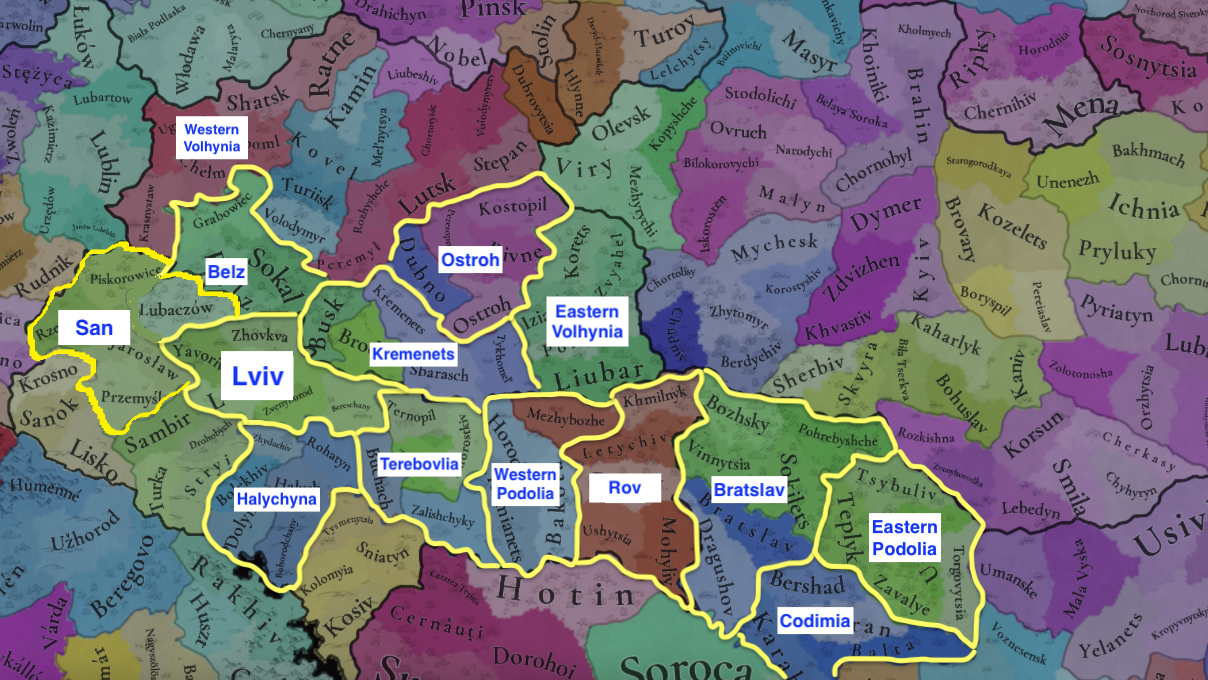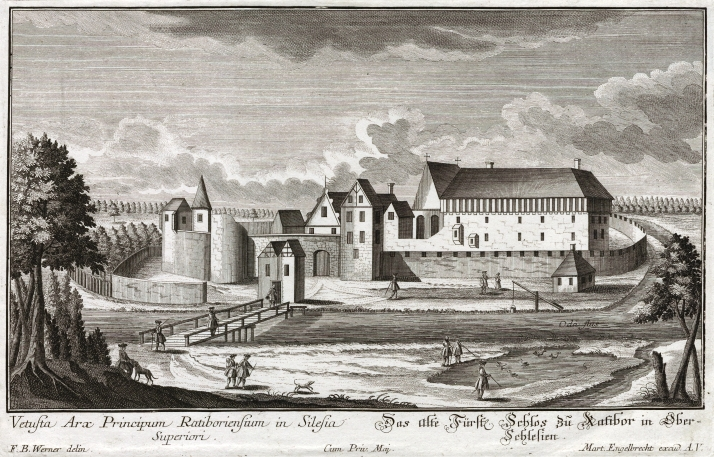List of potential unique buildings for the Silesia region:
Romanesque
rotunda in Cieszyn
The
Old Town Hall in Wrocław represents Saxon and Lusatian influences
Srebna Góra Fort
Brzeg Castle, one of the finest examples of Italian influenced Renaissance architecture in Silesia
Oleśnica Castle
Bielsko Castle
Main building of the
University of Wrocław
Czocha Castle
Church of Peace in Świdnica
Kłodzko Fortress
Pszczyna Castle
Książ Castle
The Prince's Brewery in Tychy
Gold Mine in Złoty Stok
Königin Luise Mine in Zabrze
Zinc Smelter in Katowice
Königshütte in Królewska Huta (Chorzów)
Żywiec Old Castle
Frydek Castle
Frysztat Castle
Basilica of St. James and St. Agnes in Nysa
Zator Castle
Bytom Castle
Silesian Ostrava Castle
Gliwice Castle
Opole Castle
Prudnik Castle
Namysłów Castle
Co-Cathedral of St. Jadwiga of Silesia in Zielona Góra
Głogów Castle
Racibórz Castle
Hoym Coal Mine
Town Hall in Lwówek Śląski
Silver Mine in Tarnowskie Góry
Legnica Castle
Vang Stave Church in Karpacz
Outstanding figures:
Dukes:
- Henry the Pious
- Saint Jadwiga of Silesia
- Hans Heinrich XV von Hochberg
- Hanusz II the Good
- George Hohenzollern-Ansbach the Pious
- John Christian of Brieg
- Henry V the Iron
- George William of Legnica
Aristocrats:
- Hugo I Henckel von Donnesmarck
- Johann Adam de Garnier
Commanders:
- Hans Ulrich Schaffgotsch
Raubritters:
- Black Christopher from Olszanica
- Hans von Tschirn
- Hans von Koetwitz
- Fritsche Gradis
Industrialists:
- Franz von Winckler
- Karl Godula
- Samuel Fränkel
Engineers:
- John Baildon
- Fridrich Wilhelm von Reden
Artists:
- Georg Philipp Teleman - musician
- August Kiss - sculptor
- Joseph von Eichendorff - poet
- Johann Franz Hoffmann - painter
- Jeremias Josef Knechtel - painter
- Bernard Krause - painter
- Michael Willmann Młodszy - painter
- Bartłomiej Strobel - painter
- Michael Willmann - painter
- Philip Christian Bentum - painter
- Jan of Zittau - porthole
- Jan Kryštof Liška - painter
- Pahr family - family of architects
- Carlo Rossi - architect
- Jan Schubert - sculptor
- Alois Taux - musician
Clergy:
- Saint Jacek Odrowąż
- Johannes Baptista von Albertini
- Jan Herbinius
- Seweryn Jung
- Kaspar Schwenkfeld von Ossig
- Wacław Waxmański
- Luise zu Stolberg-Wernigerode
- Joseph Schaffranek
Scholars:
- Anzelm Ephorinus - Humanist
- Angelus Silesius (Johannes Scheffler) -doctor, philosopher, poet
- Witello from Silesia - philosopher, physicist, mathematician, optician
- Reginald Kneifl
- Jan Gotfryd Theiner - doctor
- Johann Wilhelm Ritter - physicist
Merchants:
- Friedrich Gielczewsky
- Nicolaus Copernicus Sr. (father of astronomer Nicolaus Copernicus)
Politicians:
- Franz Freiherr von Hein
- Hans Ernst von Kottwitz
- Karl Georg von Hoym
- Józef Lompa
List of sample surnames of the Silesian Nobility:
Alker, Altmann, Apostolsky oder Postolsky, Arnim, Arnold, Asch, Aulok, Axleben, Axt, Baildon-Briestwell, Ballestrem, Balwin, Banck, Baruth, Bawor, Berbisdorf, Berge, Bes, Beer, Beess und Chrostin, Berka, Betsch, Běšin, Beyer, Bibran, Bibritsch, Bilcer, Bindemann, Bischofswerdt, Blacha, Bludovsky, Bock, Bocken, Boltzen, Borschnitz, Borek, Borwitz, Brauchitsch, Braun, Braunek, Brauneck, Biberstein, Birkhan, Brigido, Brzesky, Buday, Buddenbrock, Buswoy, Bytomsky, Canitz und Dallwitz, Celesta, Czelo von Czechowitz, Czeschau, Czettritz, Czirn, Dalibór, Decken-Bruhoff, Demryc, Demritz, Diebitsch, Dobschitz, Dobritsch, Dohna, Donnersmarck, Draschwitz, Duchze, Dyhrn, Dziewunty, Eichborn, Eichholz, Elbel, Ender, Enich, Erbach, Falkenhayn, Falkenhorst, Fargas, Fitschen, Foglar, Frankenberg, Francken, Frobel, Fulštejn, Gaffron, von Garnier, Gaschin, Geissler, Gelhorn, Gerlach, Gersdorf, Gfug, Giesche, Glaubitz, Glommer, Gordon, Görlich, Götzen, Gregersdorf, Grünberg, Gruttschreiber, Gütschow, Guttenstein, Gusner, Habsburg, Halama von Jičin, Hantke von Lilienfeld, Hantken von Prudnik, Hanwalt, Harrach, Hartig, Hatzfeld, Hartitzsch, Haugwitz, Haunolt, Helm von Wischkowitz, Herberstein, Hederich, Hemm, Herman, Hermann, Henckel, Henel, Hennigsdorf, Herberstein, Heugel, Heyde, Heydebrand, Heynitz, Hildebrand, Hirsch, Hohenhausen,, Hochberg, Hohenzollern, Hocke, Hoditz, Hoffmann, Hohenlohe, von und zu Hohenstein, Holly, Honbicki, Horecky von Horka, Hundt, Jakvek von Krelkov, Januszky, Jerla, Jesor, Jokay, Jordan, Kaba von Rybňan, Kager von Globen, Kaius, Kalckreuth, Kapaun von Svojkov, Kasperlik, Kecherle, Kiczki, Kinsky, Kittlitz, Klette, Kloch, Kluger, Knobelsdorff, Köckeritz, Kobylka, Kolditz, Korn, Kramsta, Koppet, Kospoth, Kosput, Koschembahr, Kostka, Kottwitz, Kotulinsky, Kowalsky, Kralitz, Krane, Krawarz, Kreckwitz, Kreischelwitz, Krockow, Krohn, Kropáč, Kropacz, Kuhl, Kulmitz, Kurzbach, Kyau, Lachmann-Falkenau, Landskron, Lang, Langenau, Larisch, von Leippe, de Lippa, Lessel, Lest, Lichtenburg, Liechtenstein, Liebdaler, Liebenau, Liedlau, Lindheim, Lischka, Loeben, Löbbecke, Logau, Lohenstein, Lottum, Luck, Lukau, Lüttwitz, Magnis, Maltzahn, Matuschka, Mauschwitz, Maxen, Mattencloit, Mettich, Mikusch, Mleschko, Moczygemba, Motschelnitz, Morawitzky, Mosch, Müffling, Mühlheim, Münchhausen, Nassau, Niebelschütz, Niemitz, Niesemeuschel, Nimptsch, von Nostitz, Nowack, Ogigiel, Obešlik von Lipultovic, Obisch Ochab, Oppel, Oppersdorff, Orlick, Osterperg, Otterstedt, Pachta, Packisch-Festenberg, Paczensky, Pannwitz, Parchwitz, Pelchrzim, Pelcka, Peterswald, Petrasch, Pfeil, Piast, Pilch, Pifko, Plissen, Pogrel, Pohledetzky, von Poncet, Poppschütz, Porschnitz, Portatius, Poser, Post, Praschma, Predel, Prittwitz, Promnitz, Pückler, Rackel, Radetzki, Rappach, von Ratibor und Corvey, Ratschin, Rätzke, Raussendorff, Rechenberg, von Reden, Regensperg, Rehbinder, von Reibnitz, Reichaw, Reichenbach, Reideburg, Reinsberg, Reisewitz, Richthofen, Rödern, Rochra, von Rohnau, Rohr, Rothenburg, Rothkirch, Ruditzki, Runge, Saalhausen, Sack, von Sagan, Salis, Salisch, Saint-Genois, Saltza, Sandreczky, Sauermanner, Saurma, Schaffgotsch, Scheliha, Schellendorf, Schenckendorff, Schickfus, Schindel, Schlabrendorf, Schlieben, Schlichting, Schliewitz, Schmettau, Schmidel, Schnellenwald, Schoenberg, Sedlnitzky, Schönaich-Carolath, Schönburg, Schreibersdorf, Schütz, Schweinichen, Schweinitz, Schwerin, Schwenckfeld, Sebottendorf, Seherr von Thoss, Seidlitz, Seydlitz, Senitz, Silhan, Silheim, Solms-Braunfels, Sommerfeld, Spaetgen, Spens, die Stange zu Kunitz, Stechow, Stiebitz, Stillfried, Stoltz, Stosch, Strachwitz, von Sweyn, Szwajnoch, Tader, Temritz, Talckenberg, Thurzo, Trach, Trauttmansdorff, Trolio, Tschammer, Tscherny, Tschischwitz, Tscheschaw, Tcheschau, Tschirnhaus, Tschirschky und Reichel, Tunkel, Ullesdorf, Unruh, Unwerth, Üchtritz, Waldau, Waldenburg, Walditz, Waniczek, Warnsdorf, Wartensleben, Welczeck, Wilczeck, Winz, Weisbach, Wiese, Wildau, Wolframsdorf, Wratislaw, Wrbna, Veltheim, Vranov, Vyškota von Vodnik, Yorck von Wartenburg, Zajonschek, Zedlitz, von Zedlitz-Neukirch, Želecký von Počenic, Zeschau, Zibulcka, Ziethen, Zigan, Zhorský von Zhorze, Zobeltitz, Žampach von Pottenstein, Žňovský von Korkyně
Source (in Silesian):
https://szl.wikipedia.org/wiki/Ślōnske_familije_szlachecke
Other Silesian surnames:
Anczok, Andzioł, Andziul, Aptekorz, Aptyka, Babioch, Bablok, Bacik, Badura, Baluch, Bambynek, Banisch, Bartocha, Basczok, Bazgier, Baszton, Beblik, Bedrunka, Belok, Benisz, Białas, Biczek, Biegon, Bielesz, Bienek, Bienioszek, Biesok, Bigdon, Bilich, Bitniok, Bobrzyk, Bochynek, Bodora, Bojdoł, Bolik, Bombik, Borosz, Borutka, Brachaczek, Branny, Breguła, Broja, Brychlik, Brzitwa, Bugdoł, Bujoczek, Burziwoda, Bylok, Cedziwoda, Cempulik, Chleborz, Chodura, Chromik, Chybiorz, Cibura, Cieplik, Ciomber, Ciomperlik, Ciongwa, Ciurlok, Cofalik, Curlok, Cyron, Czarnynoga, Czech, Czembor, Czerner, Czmajduch, Czora, Czorniczek, Czura, Czurlok, Czwiorok, Czypionka, Debudaj, Dembiniok, Derlik, Dorulok, Drabiniok, Drosdziok, Drzyzga, Dulniok, Dwucet, Dyga, Dymorz, Działach, Dziambor, Dzida, Dziewior, Dziuk, Elisch, Fabisz, Famula, Famulok, Farniok, Ferdyan, Firla, Franciok, Franik, Furas, Furgol, Fylok, Gajda, Gala, Galios, Galenziok, Garbas, Garcorz, Garus, Gaszok, Gawlik, Gigla, Gizdoń, Glagla, Gliniorz, Glombik, Głodniok, Gmyrek, Gniozdorz, Gniza, Godziek, Godula, Gogolok, Gogulla, Gordzielik, Gorki, Gorywoda, Gorzelik, Grabolus, Gralla, Gramula, Griszke, Grobosz, Grochla, Grolik, Gruchlik, Grzeja, Grzomba, Guziel, Habier, Hadula, Hajda, Halupczok, Hanke, Helisz, Herisz, Hetmaniok, Hombek, Huda, Hutny, Hybiorz, Ibrom, Imiela, Jableka, Jatzek, Jachnik, Jagusiok, Jandzioł, Janecko, Janica, Janocha, Janoszek, Janota, Janta, Janysik, Jaromin, Jedzok, Jeglorz, Jelonek, Jonderko, Jonecko, Jonkisz, Juraszek, Jurochnik, Kabocik, Kabuła, Kadzioch, Kaliga, Kaloch, Kałamała, Kandzia, Kaprol, Kapuściok, Karwat, Kaszny, Kawulok, Kempny, Kipka, Klapec, Klimala, Kluczniok, Klyszcz, Kobior, Kochut, Kociok, Kocur, Koczor, Kolny, Koloch, Komor, Konieczko, Kopiec, Kopyciok, Korfanty, Koryciorz, Kotysz, Kotula, Kozub, Koźlik, Krajczok, Krentorz, Krystek, Krzep, Krziwon, Ksionsyk, Kubica, Kulodzik, Kulpok, Kupka, Kurzacz, Kuś, Kusz, Kuszka, Kuzior, Kuźnik, Kwapik, Kwiatoń, Labisz, Lebuda, Ledwoch, Lipok, Lisoń, Lotko, Łabaj, Machnik, Machoń, Machura, Macioł, Makosz, Mandrysz, Maroń, Materlik, Mechnik, Michnik, Mielimonka, Miensopust, Mika, Misz, Moczigemba, Morawin, Mordeja, Musiolik, Niedoba, Nielaba, Nogły, Nosiadek, Nowrotek, Odelga, Olejok, Opioł, Otremba, Paciok, Palemba, Pampuch, Papierok, Piechaczek, Pieczka, Piernikorz, Piesiur, Pietryja, Pilich, Pindur, Piszczek, Pindur, Pitas, Plaszczymonka, Plewniok, Pochcioł, Polnik, Popenda, Porombka, Promny, Przeliorz, Przybyła, Psiorz, Pszczelorz, Puzoń, Pyka, Pyrcik, Pyszniok, Raszka, Rataj, Rduch, Remiorz, Respondek, Ruśniok, Rybiorz, Rzychoń, Rzitka, Salisz, Samol, Sapok, Schmeiduch, Sczeponek, Sierny, Sitko, Siwy, Siwoń, Skalbaniok, Skaźnik, Skliniorz, Skolik, Skopek, Skrobol, Skupnik, Słowioczek, Smarzoch, Smoczok, Smolorz, Smuda, Sobala, Sobik, Sówka, Sporysek, Spura, Stabik, Starzoch, Stawinoga, Stenchlik, Stompel, Strzedula, Strzoda, Studnik, Subelok, Syguda, Szczasny, Szczypka, Szewior, Szkatuła, Szkrobol, Szłapa, Szmatloch, Szołtysek, Szromek, Szwarlik, Szygula, Szymura, Śmieja, Śruborz, Świdergoł, Świenty, Świergolik, Tatoj, Tiszbierek, Tobolik, Toszek, Troszok, Trzaskalik, Twardoch, Ulczok, Urzeniczok, Waduła, Walochnik, Waluga, Warcok, Warzic, Wąglorz, Wengrzik, Wicher, Wieja, Wilga, Wodniok, Wojtala, Wosz, Wowry, Wyleżoł, Wyrwich, Wyżgoł, Zachnik, Zadora, Zarembik, Zdebel, Zembok, Zemlok, Zgrzebniok, Ziebura, Zieleźnik, Zieleźny, Zimnol, Zmarzły, Zogornik, Zupok, Ziska, Żemlok, Żur, Żymła
Male names:
Achim, Adolf (Dolfik), Albert, Alfons, Alfred, Alojz, Jyndrek, Tonik, August, Bernard, Bruno, Czesik, Damian, Edward (Ecik), Emanuel (Manek), Emil, Erich, Erwin (Yrwin), Ojgen, Ewald, Francik, Friedrich (Frydek), Gyrard, Gustlik, Hubert (Bercik), Helmut, Hajnel or Hajnrich, Ignac, Johan (Hanys), Jorg, Joseph (Zeflik, Pepiczek), Karol (Karlik), Kazmir, Krystian, Leon, Ludwig, Maximilian (Maks), Manfred, Maniek, Michoł, Niklaus, Otto (Otek), Paul, Pjeter, Raymond (Mundek), Rajnhold (Holdek), Raflik, Robert, Rudolf (Rudzik), Richart, Stanik, Selwa, Sztefan, Szczepon, Theodor, Waldemar (Waldzik), Walter, Wilhelm (Wilem), Zynek, Zygfryd (Ziga), Sigismund (Zyga)
Female names:
Adelajda, Agnes, Berta, Aloisia (Alojza), Amalia, Stazyja, Angela (Nela), Ana, Antonina (Tondla), Apollonia (Dinka), Augustine (Gustla), Barbara, Beate, Bernadette (Bernata), Bibiana, Blandina (Blandyna), Bohumila (Bogulka), Broncla, Brygida, Cila, Dora, Edeltraud (Trauta), Edita, Elza, Emilie (Milka), Emma (Yma), Erna, Erika, Felcia, Frida, Gynia, Felicia (Felcia), Folrentine (Tina), Franziska (Francla), Gabriele, Genoveva (Gefa), Gertruda (Truda), Gizela, Hanna (Hana), Helene (Hela), Hynia, Herma, Hildegarda (Hilda), Ingrid, Irma, Hedwig (Hejdla), Jana, Johanna (Aniszka), Zyta, Katharina (Katla), Christine (Krystla), Lida, Luzia (Luca), Lucy (Ucyja), Madeleine (Magda), Margarete (Gryjta), Maria (Maryjka), Marianna (Mańka), Matilda (Tylda), Ottilie (Tila), Rosalie (Ruzala), Rose (Rołza), Salomea (Zalka), Seraphina (Zerka), Stefanie (Sztefka), Theresa (Tereza), Ursula (Usia), Victoria (Wichtora), Wilhelmina (Wilma), Zenobia, Sophia (Zofija)























































